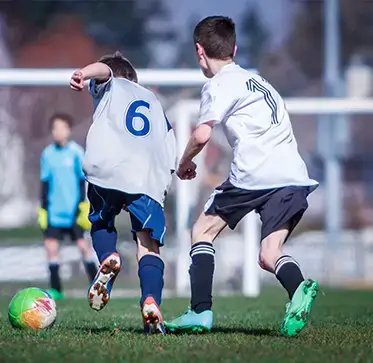CRFC BLOGS
LATEST BLOGS & NEWSLETTERS
Youth Soccer Cleat Rules: A Complete Guide for Parents and Players
Choosing the right youth soccer cleats is one of the most important decisions for young soccer players. It directly impacts their performance, comfort, and safety on the field. This guide will break down the essential rules, help you understand how to select the right cleats and ensure your child is set up for success.
Understanding Youth Soccer Cleat Rules
Why Are Cleats Important for Youth Soccer?
Youth soccer cleats are critical in helping young athletes perform their best. They are designed to provide traction, balance, and stability, which allow players to run, stop, and change directions quickly on the field. Unlike regular sneakers, cleats dig into the ground, giving players better control, especially on grass or turf.
With proper youth soccer cleats, players may stay balanced, slip more efficiently, and have trouble controlling the ball. This can affect how they play and increase the chance of injury. That’s why most soccer leagues, including youth leagues, have specific rules about what cleats players can wear.
Safety Considerations in Youth Soccer Cleats
Safety is a top concern in youth sports, and youth soccer cleat rules are designed to prevent injuries. Cleats that aren’t made for soccer or include dangerous elements, such as metal studs, can lead to accidents on the field. On the other hand, soccer cleats are designed to reduce the risk of injury while still providing the needed grip and performance.
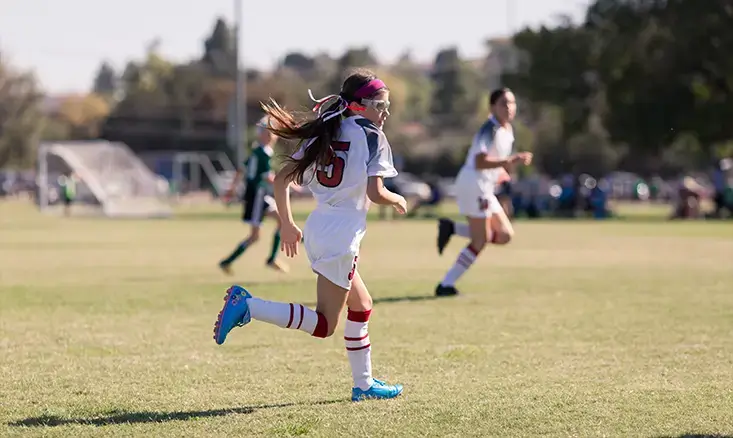
Youth Soccer Cleat Requirements and Regulations
Each soccer league usually has its own set of youth soccer cleat requirements, but the overall goal is to ensure all players are safe and fairly equipped. Most leagues, including the American Youth Soccer Organization (AYSO), enforce the following youth soccer cleat regulations:
No Metal Cleats
Metal cleats are not allowed in youth soccer leagues. They can be dangerous if a player accidentally steps on another player’s foot.
No Toe Cleats
Football and baseball cleats have an extra cleat on the front, near the toes. This type of cleat is not allowed in soccer because it poses a safety hazard.
Molded Rubber or Plastic Studs
The studs (or spikes) on the bottom of youth soccer cleats should be molded rubber or plastic. These materials provide traction without harming other players.
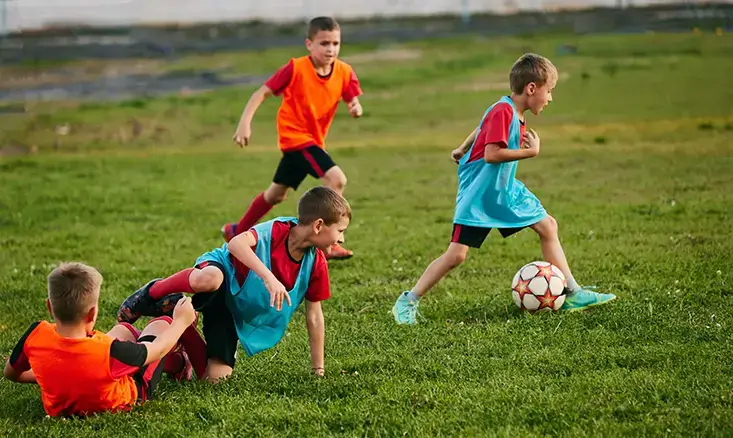
Youth Soccer Cleat Size Guide: Finding the Right Fit
Choosing the right size is one of the most important things to get right when buying youth soccer cleats. A proper fit is essential for comfort and performance. Cleats that are too tight can cause pain and blisters, while those that are too loose can make it difficult for your child to move quickly or control the ball.
Here’s a quick youth soccer cleat size guide to help you find the right fit:
Measure Both Feet
Children’s feet can be of different sizes. If there’s a difference, always measure both feet with the larger size.
Leave a Little Room at the Toe
A properly fitting cleat should have a small amount of space (about a thumb’s width) between the toes and the front of the shoe. This gives the foot room to move and grow.
Test for Comfort
Once the cleats are on, have your child walk or run in them. They should feel snug but not too tight, and there shouldn’t be any pinching or discomfort. Comfort is key because your child will wear the cleats during practices and games, often for long periods.
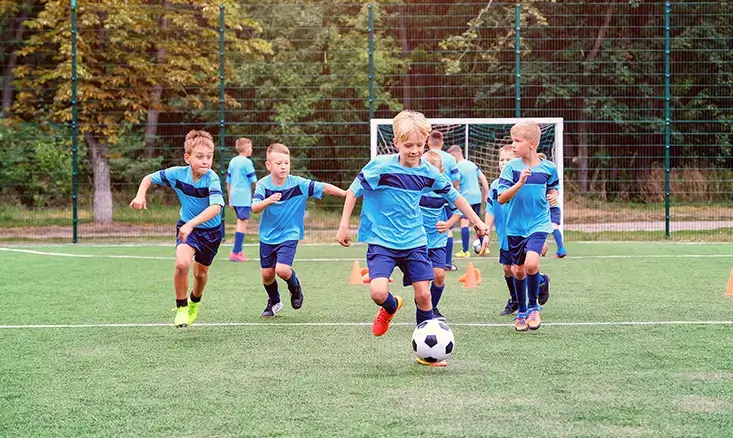
Importance of Proper Sizing in Youth Soccer Shoes
Wearing cleats that are the wrong size can lead to problems. Cleats that are too small can cause blisters and pain, while cleats that are too big can make your child more likely to trip or lose control of the ball. It’s also important to consider that children’s feet grow quickly, so you might need to replace their cleats more often than you think. Regularly check the fit to ensure they are still comfortable and practical.
Types of Youth Soccer Cleats
There are several types of youth soccer cleats, each designed for a specific playing surface. Understanding the differences can help you choose the best cleats for your child.
Firm Ground (FG) Cleats
Firm ground cleats are designed for natural grass fields. They have longer, molded studs that dig into the ground to provide good traction. These cleats are ideal for most youth soccer players who play on regular grass fields.
Turf (TF) Cleats
Turf cleats are designed for artificial turf surfaces. They have shorter rubber studs that provide grip without damaging the turf. These cleats are a good option if your child plays on artificial fields or in indoor soccer leagues.
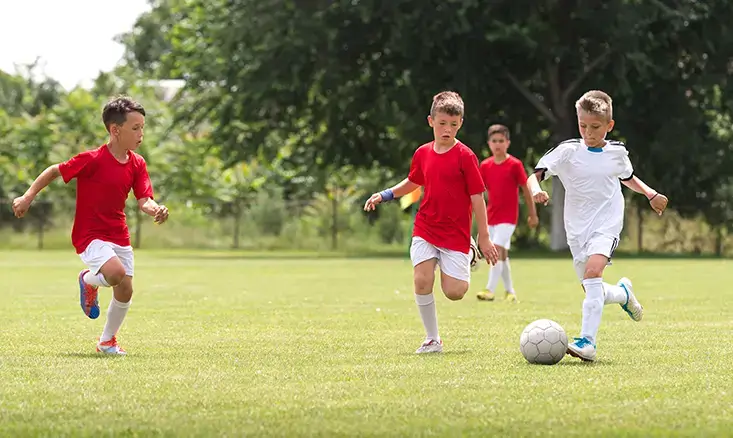
Youth Soccer Cleat Tier List
There are different tiers of youth soccer cleats based on quality, performance, and price. Here’s a basic youth soccer cleat tier list to help guide your purchase:
Entry-Level Cleats for Beginners
Entry-level cleats are a great option if your child is just starting out. They are affordable, durable, and provide good performance for beginners. Brands like Adidas and Nike offer great entry-level options for young players.
Mid-Tier Cleats for Developing Players
Investing in mid-tier cleats can offer better performance features such as lighter materials, enhanced grip, and better ball control as your child improves. These cleats are suitable for players who are more serious about the game.
High-Tier Cleats for Competitive Players
For highly competitive youth players, high-tier cleats like the Nike Mercurial or Adidas Predator offer top quality. These cleats are designed for advanced players and can provide a competitive edge with features like lightweight construction, improved control, and better traction.
Conclusion
Selecting the right youth soccer cleats is essential for your child’s safety and performance on the field. By understanding the youth soccer cleat rules, choosing the right size, and selecting the correct cleat type for the playing surface, you can ensure that your child is equipped to play at their best. Cleats that fit well, meet league regulations, and provide proper traction can help your child enjoy the game and avoid injuries.
FAQs
Can youth soccer players wear metal cleats?
No, metal cleats are not allowed in most youth soccer leagues because they can be dangerous and cause injuries to other players.
How do I know if the cleats fit my child properly?
A well-fitting cleat should have a small amount of space at the toes (about a thumb’s width). The cleats should feel snug but not too tight. Let your child walk or run in them to check for comfort.
Can my child use football or baseball cleats for soccer?
No, football and baseball cleats are not allowed in soccer because they have a toe cleat, which is dangerous. Always buy cleats specifically designed for soccer.
How often should youth soccer cleats be replaced?
You should replace cleats when they become too small, uncomfortable, or worn out. Make sure to regularly check the fit as children’s feet grow quickly.
What’s the best brand for youth soccer cleats?
Top brands for youth soccer cleats include Nike, Adidas, and Puma. Each brand offers a variety of cleats suited for different skill levels and playing surfaces.

Did you find this useful?


